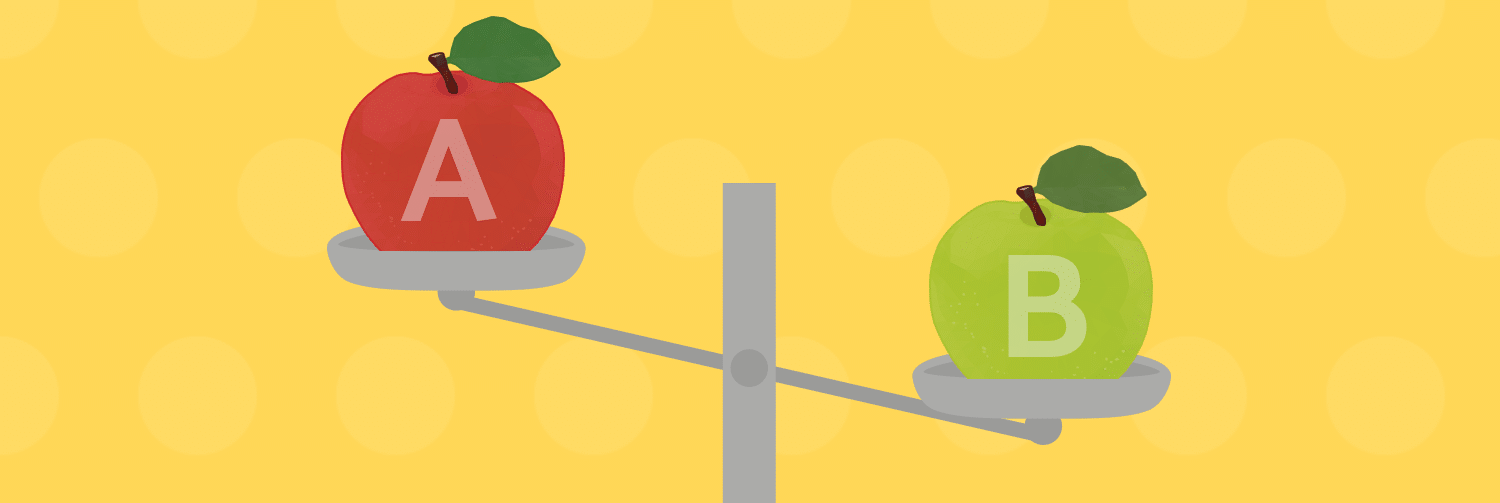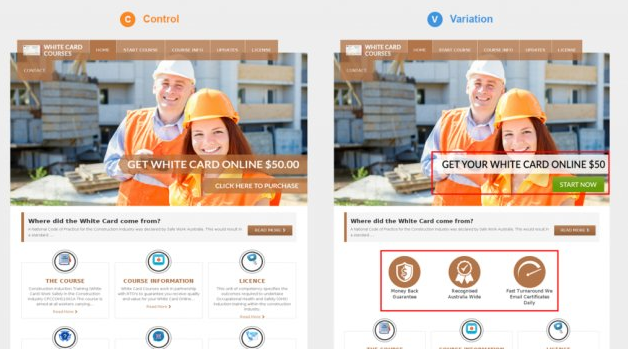
It’s one of the most important elements of your business success—yet you haven’t tested it yet.
When people hear the phrase “A/B testing,” they tend to think of on-site variables. Headlines. Call to action buttons. Colors. Design. But when 58% of marketers say that original written content is the most important aspect to their content strategy, why aren’t more of us using the principles of A/B testing to tighten up our original content?
The simplest answer: Few of us know how. Let’s fix that.
Where Do You Start? Try Testing These Variables
The best way to get started is simply to pick out the variables you want to test. Here are some of those variables you can isolate to enhance your content’s chance at success:
Visual elements
The Content Marketing Institute found that “ad engagement increased by 65% when a new image was tested versus simply testing new copy.” That’s just how today’s multimedia world works: Good content is a synergy of different elements on the page. Yes, it’s important to have powerful substance fueling your content, but testing different visual elements helps you figure out the formula for drawing people in.
 Placing visual trust badges in a prominent place on the homepage increased visits to the purchase page at White Card Courses. (Source)
Placing visual trust badges in a prominent place on the homepage increased visits to the purchase page at White Card Courses. (Source)
Emails
Subject lines, body content, calls to action—there are plenty of different elements to test even within the world of email content. Start with figuring out how subject lines best work for your particular brand. Remember: some 33% of people open an email based on that single element.
Headlines and headers
You don’t have to consult a heatmap to understand that the most important text on your page comes in the forms of headlines and headers. These are the most striking elements of written content. Test different headlines for landing pages and on-site content—these will yield long-term results in decreased bounce rates and better conversion numbers.

Konnikova said of her article in the New Yorker: “If I had instead called it “Why We Need Eight Hours of Sleep,” people would remember it differently.” (Source)
How to Test Your Content: Strategies and Tools
Did you know that the blog at Buffer consistently A/B tests their blog headlines? They even select their specific headlines to test from a group of 5-10 headlines from their brainstorming sessions. From there, they select multiple candidates and post them to the Buffer Twitter account, using their own analytics platform to gauge which performs the best.

Two tweets—but the same exact link source at Buffer. (Source)
That’s right: their system isn’t particularly sophisticated. They just tweeted the same content twice with different headlines and tracked the results.
Which means that to test your own content, you don’t need a large team sitting around and brainstorming great ideas. Here’s how to get started:
-
Start with Analytics
Google Analytics, Buffer Analytics—whatever you choose, just make sure that it’s properly plugged into your content strategy and ready to show you clean results.

A fully-functioning Google Analytics dashboard. (Source)
-
Isolate your variables.
Try creating two copies of the very same thing. Buffer used two links to the same content to see which headline grabbed the most attention. Can you do the same somewhere on your own site? Can you run two landing pages with different headlines? Different visual elements? As long as you’re tracking the results, the A/B test will be off to the races.
-
Consult your platform.
Whether you use WordPress, Squarespace, or some other tool to host your online content, you’ll find there are plenty of digital tools for A/B testing. Utilizing content components within your design can also make A/B testing easier. For an overview of components and how they can enable automated personalization and optimization on content, see our piece on machine learning.
-
Integrate tools for continued experimentation.
Try Optimizely. This is one of the most-recommended tools for experimenting with your content, a “full stack” of web testing that will have you questioning the assumptions behind your online presence.
These are just a few ways to dip your proverbial toes in the water. The key: utilize many of the platforms you already have—social media, content management, etc.—to make A/B testing work within your site’s existing infrastructure. Take a methodical, step-by-step approach. It doesn’t have to be a complicated process of revamping your entire site, but the more deliberate you are, the more likely you’ll have success.
Case Studies in A/B Testing Success
So, how do you know it’s all worth it?
Companies have done it before, with astounding success. Buffer—relentlessly tracking its content success through social media channels—found that tweets with images were far more likely to receive clicks, retweets, and favorites.

Source: BufferApp.com
Optimizely also points out that Ringier found all sorts of insights by testing out its content. They were able to choose an article that outperformed its counterpart by 38% more clicks by emphasizing visual elements at the top. They also tested out header images and subject lines, identifying that the same content could attract entirely different amounts of page impressions.
Their overall efforts resulted in 19.7% more clickthrough from homepage to the article, further increasing their reader engagement and driving more potential leads through their conversion funnels.
Sometimes, Optimizely noted, companies don’t have a whole lot of on-page elements to test out. But even video-centric content can test elements like the video preview image: they optimized a “Ken Burns” effect into the preview, which resulted in a 6% increase in clicks. The lesson? There’s always something you can try doing that’s fresh and new and worth testing.
Making Your Content Work through Testing
Let’s face it: No one knows exactly what content is going to resonate with people. Although experienced content marketers might have an idea of what might work, you never really know until the rubber hits the road.
But A/B testing can help you navigate these murky waters. Rather than hoping that a content strategy works, A/B testing forces a marketer to step back and ask, “What does work? And what can I change?” By implementing new A/B testing on your own content, you can not only improve the quality of that content, but ultimately drive more clicks, leads, and traffic to your own site.
Events, Resources, + More
The Ultimate Guide to End-to-End Content
Discover why + how an end-to-end approach is critical in the age of AI with this comprehensive white paper.
The Content Advantage Book
The much-anticipated third edition of the highly rated book by Colleen Jones is available at book retailers worldwide. Learn more!
20 Signs of a Content Problem in a High-Stakes Initiative
Use this white paper to diagnose the problem so you can achieve the right solution faster.
Upskill with Content Science Academy
Training for modern content roles through on-demand certifications + courses or live workshops.






Comments
We invite you to share your perspective in a constructive way. To comment, please sign in or register. Our moderating team will review all comments and may edit them for clarity. Our team also may delete comments that are off-topic or disrespectful. All postings become the property of
Content Science Review.